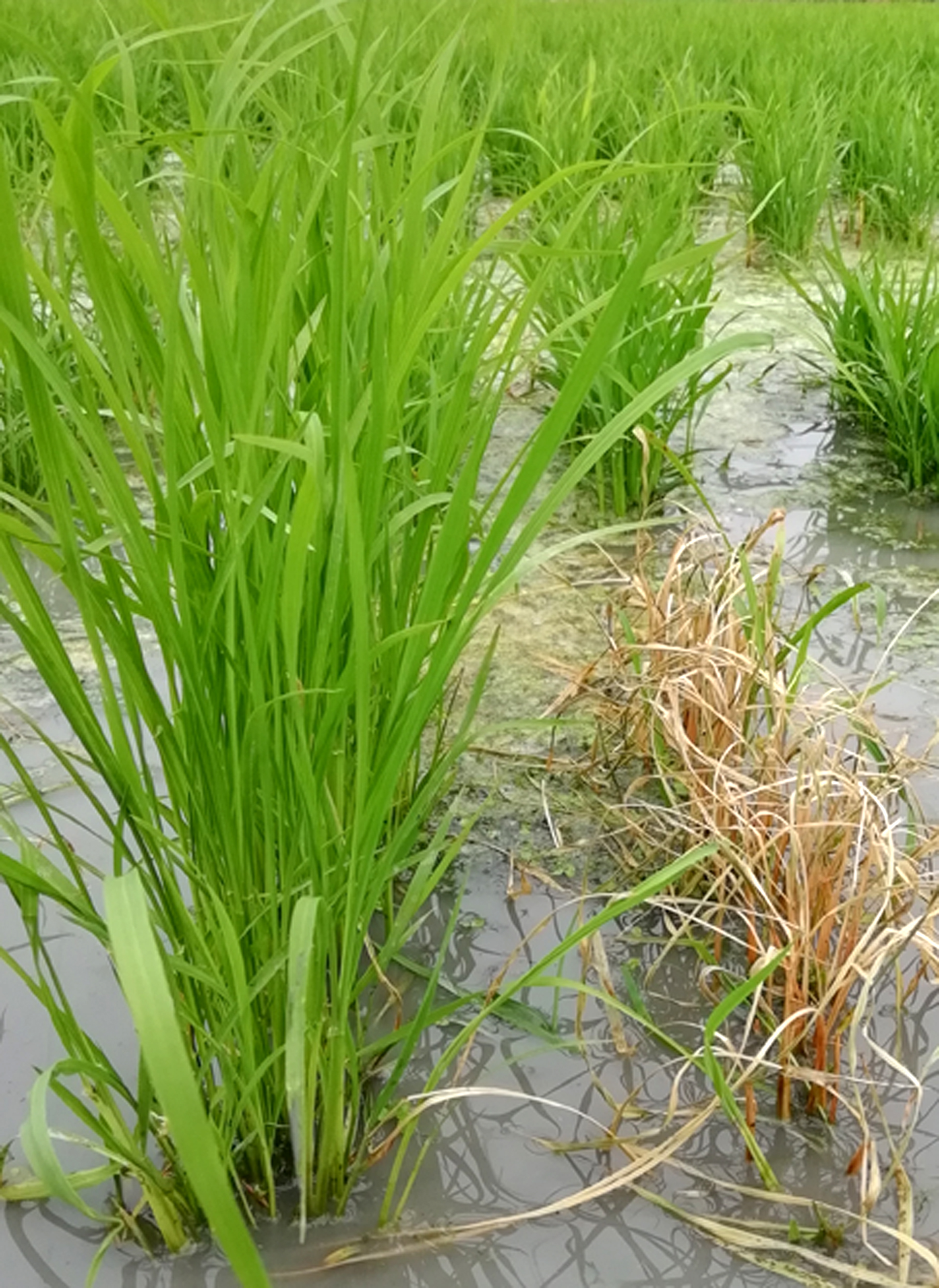

Received date: 2020-09-15
Accepted date: 2020-09-18
Online published: 2020-09-21
Pathogenic microbes employ specialized mechanisms to breach defense of host plants, causing diseases on plants and losses in agricultural production. Understanding mechanisms of pathogenesis offers new avenues for disease control. A team from Sichuan Agriculture University led by Xuewei Chen investigated mechanisms underlying the genera- tion of an infection structure called penetration peg, which is employed by many fungal pathogens such as the one causing blast disease on rice. They discovered that very-long-chain fatty acids are required for this process. They further demonstrated that a group of commercialized herbicides capable of inhibiting very-long-chain fatty acid biosynthesis in fungi can effectively inhibit pathogenesis of a broad spectrum of fungi, which brings new technology to control diseases and provides new ideas for new pesticides discovery.

Key words: rice blast; penetration peg; rice; pesticide; very-long-chain fatty acids
Jian-Min Zhou , Lidong Cao . Antifungal Compounds Come in Handy[J]. Chinese Bulletin of Botany, 2020 , 55(5) : 533 -536 . DOI: 10.11983/CBB20158
| [1] | 张立新 ( 2017). 新农药研发进展与趋势. 沈阳化工大学学报 31, 97-104. |
| [2] | 赵斌, 陈来, 张乃楼, 范志金 ( 2018). 新型杀菌化合物靶标识别及其靶向候选药剂设计概述. 农药学学报 20, 397-407. |
| [3] | Bach L, Faure JD ( 2010). Role of very-long-chain fatty acids in plant development, when chain length does matter. Compt Rend Biol 333, 361-370. |
| [4] | Bertin A, McMurray MA, Thai L, Garcia III G, Votin V, Grob P, Allyn T, Thorner J, Nogales E ( 2010). Phosp- hatidylinositol-4,5-bisphosphate promotes budding yeast septin filament assembly and organization. J Mol Biol 404, 711-731. |
| [5] | Guan AY, Liu CL, Yang XP, Dekeyser M ( 2014). Application of the intermediate derivatization approach in agrochemical discovery. Chem Rev 114, 7079-7107. |
| [6] | He M, Su J, Xu YP, Chen JH, Chern MS, Lei ML, Qi T, Wang ZK, Ryder L, Tang BZ, Oses-Ruiz M, Zhu KK, Cao YY, Yan X, Eisermann I, Luo Y, Li WT, Wang J, Yin JJ, Lam SM, Peng GX, Sun XF, Zhu XB, Ma BT, Wang JC, Liu JL, Qing H, Song L, Wang L, Hou QQ, Qin P, Li Y, Fan J, Li DQ, Wang YP, Wang X, Jiang L, Shui GH, Xia YX, Gong GS, Huang F, Wang WM, Wu XJ, Li P, Zhu LH, Li SG, Talbot NJ, Chen XW ( 2020). Discovery of broad-spectrum fungicides that block septin-dependent infection processes of pathogenic fungi. Nat Microbiol https://doi.org/10.1038/s41564-020-00790-y. |
| [7] | Kihara A ( 2012). Very long-chain fatty acids: elongation, physiology and related disorders. J Biochem 152, 387-395. |
| [8] | Lamberth C, Jeanmart S, Luksch T, Plant A ( 2013). Current challenges and trends in the discovery of agrochemi- cals. Science 341, 742-746. |
| [9] | Momany M, Talbot NJ ( 2017). Septins focus cellular growth for host infection by pathogenic fungi. Front Cell Dev Biol 5, 33. |
| [10] | Mostowy S, Cossart P ( 2012). Septins: the fourth component of the cytoskeleton. Nat Rev Mol Cell Biol 13, 183-194. |
/
| 〈 |
|
〉 |